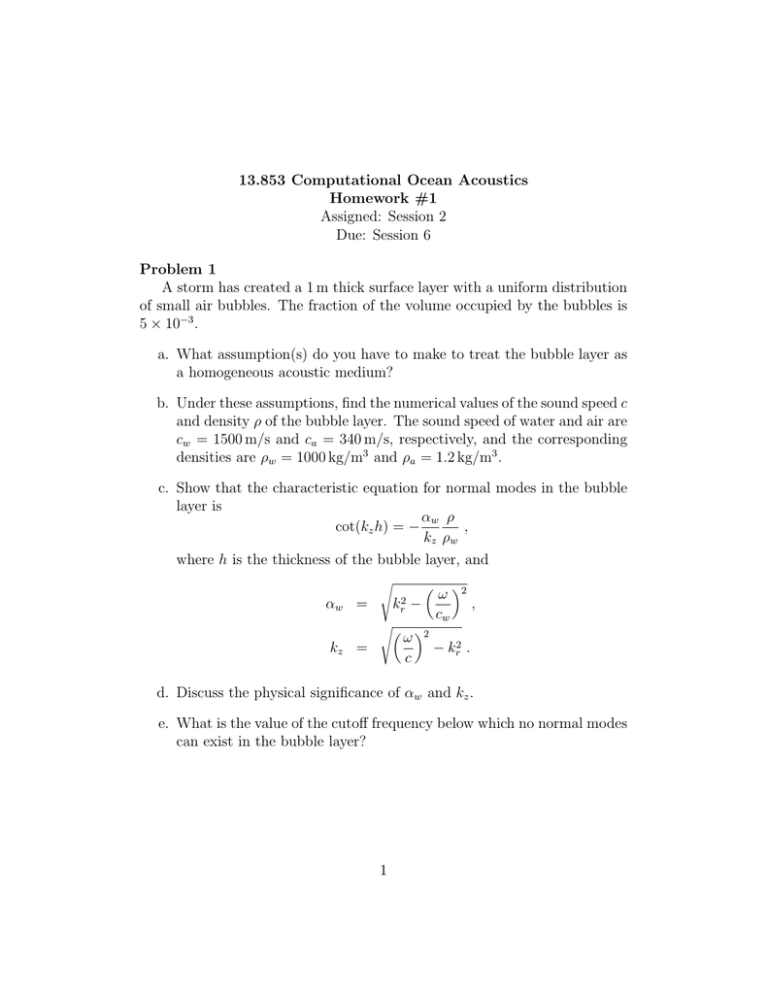13.853 Computational Ocean Acoustics Homework #1 Assigned: Session 2 Due: Session 6
advertisement

13.853 Computational Ocean Acoustics Homework #1 Assigned: Session 2 Due: Session 6 Problem 1 A storm has created a 1 m thick surface layer with a uniform distribution of small air bubbles. The fraction of the volume occupied by the bubbles is 5 × 10−3 . a. What assumption(s) do you have to make to treat the bubble layer as a homogeneous acoustic medium? b. Under these assumptions, find the numerical values of the sound speed c and density ρ of the bubble layer. The sound speed of water and air are cw = 1500 m/s and ca = 340 m/s, respectively, and the corresponding densities are ρw = 1000 kg/m3 and ρa = 1.2 kg/m3 . c. Show that the characteristic equation for normal modes in the bubble layer is αw ρ , cot(kz h) = − kz ρw where h is the thickness of the bubble layer, and s kr2 αw = s kz = ω − cw ω c 2 2 , − kr2 . d. Discuss the physical significance of αw and kz . e. What is the value of the cutoff frequency below which no normal modes can exist in the bubble layer? 1 Problem 2 Throughout the course we will develop a set of propagation models in MATLAB using various solution techniques for range-independent and rangedependent ocean environments. The tools developed here will be used for these. be prepared to demonstrate them in class on Athena. a. Write an interactive MATLAB user interface for specifying the necessary environmental parameters for a range-independent ocean with a depth-varying sound speed profile and a stratified fluid or elastic bottom with up to 3 layers (including the bottom halfspace). b. Write a MATLAB function for graphically representing the acoustic environment. c. Write an interactive MATLAB user interface for specifying source and receiver geometry. Assume you have to compute transmission loss over a rectangular grid in depth and range. d. write a MATLAB tool for graphically showing the computed transmission loss vs range or depth, or as a contour plot in depth and range. 2



